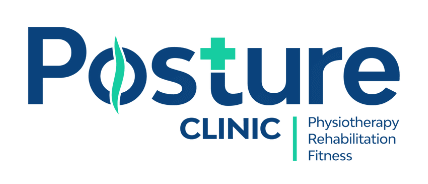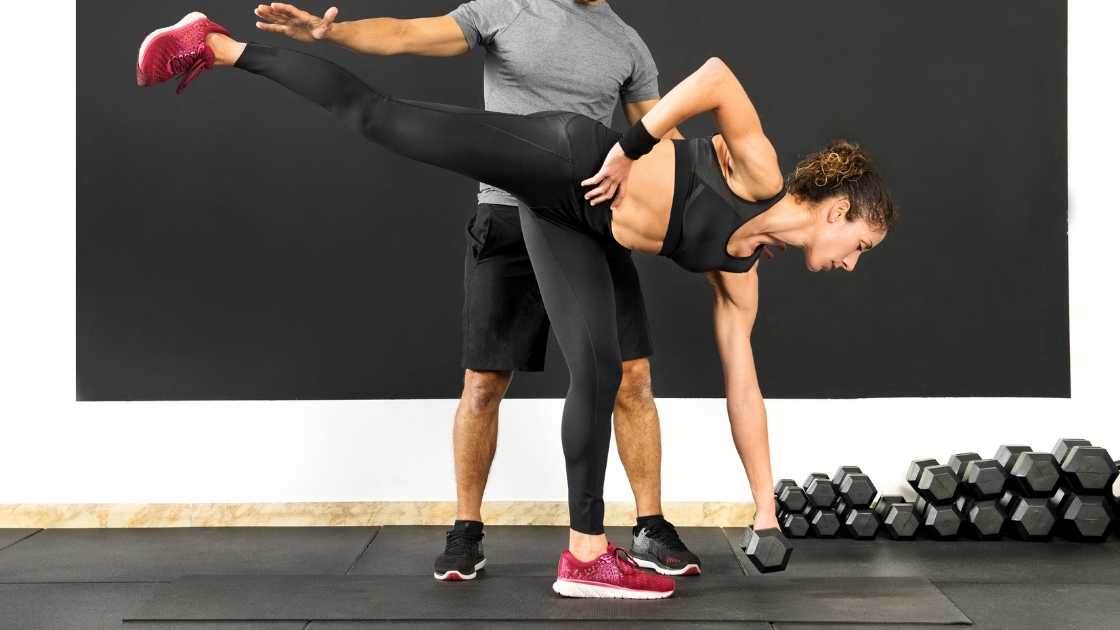Your posture is something that you should always be aware of, but it's especially important if you're feeling aches and pains or if you're experiencing back pain. If your posture is off, your body will constantly be compensating for the bad alignment. Bad alignment can lead to muscle strain and cause other problems over time. But don't worry: There are exercises that can help improve your posture! In this blog post, we'll go over some simple ways to get those shoulders back where they belong—and help relieve any pain along the way. When you think of simple exercises to improve posture, you probably don't think about pectoral massages and kneeling hip flexor stretches. But these are exactly the kind of exercises that will help you improve your posture and prevent future back pain. Remember, improper, bad and poor posture can cause muscle tension or muscle fatigue and lead to rounded shoulders, static posture, and forward head. Proper alignment and better posture promotes healthy living and better performance in sports and everyday activities.
Pectoral Massage
This exercise helps loosen up the muscles in your chest and shoulders. To do it, stand with your back against a wall, then place one hand on top of each shoulder blade. Slowly lower yourself down until you feel a stretch in your chest and shoulders. Hold for 30 seconds, then repeat 3 times.
Shoulder External Rotations
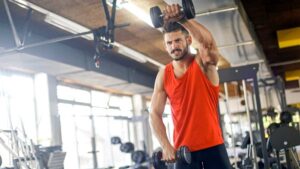
This exercise is a great way to strengthen your upper body while also improving flexibility. Stand with your feet shoulder-width apart; then raise your arms straight out in front of you so they're parallel to the ground and palms face forward (like Superman). Next, rotate your arms out as far as possible without letting them move past this position; then return them back toward the centre before repeating again for 10 reps total per side (5 on each side).
Chin Tuck

This exercise is all about strengthening the muscles in your neck so that they'll be able to support the weight of your head better—which will help keep your head in a healthy position and prevent neck pain or headaches. Start by sitting up tall with your shoulders back and your chin parallel to the ground. Then, without moving anything else, tuck your chin slightly so that your jaw moves closer to your neck but not so much that you feel any discomfort. Hold this position for 10 seconds before slowly releasing it. Repeat 10 times.
Kneeling Hip Flexor Stretch
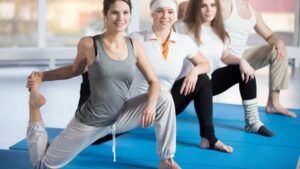
This is a great exercise for anyone who spends a lot of time sitting down in an office chair or driving a car. It's so important to keep your hip flexors loose and limber, especially if you're someone who works on a computer for most of their day! This exercise will help open up those areas, allowing you to stand up straight without any extra effort! To do this stretch, kneel in front of a wall and place your back leg's foot flat against the wall. Your front leg should be bent at a 90-degree angle and extended out to the side. Place both hands on the floor in front of you and lean forward until you feel a stretch in your thigh. Hold this position for 30 seconds, then repeat it on the other side.
Reverse Fly
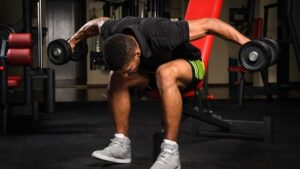
Reverse fly is a great exercise to strengthen your rhomboids, which are located between your shoulder blades. It also works your upper back, shoulders and arms. To perform reverse flys, sit at the edge of a bench with feet planted firmly on the floor and hold a light dumbbell in each hand. Your palms should be facing inwards towards each other and elbows bent at 90 degrees. Lift the weights out to the side by squeezing your shoulder blades together as far as possible keeping them down towards your waist. Then slowly lower them back down to starting position.
Stretch your back and shoulders
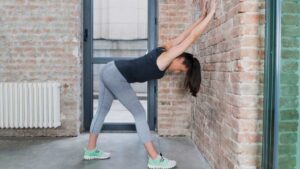
Shoulders are often the first place to go wrong, and it's easy to see why: they're held up by a small number of muscles that can easily become tense from sitting at a desk. Try these simple stretches for improved posture:
- Stand with your feet slightly apart and arms at your sides
- Take a deep breath in through your nose and out through your mouth, letting all the air out as you do so
- Now lift one arm high above your head while bending forward slightly; repeat on the other side (if this is too difficult, keep both arms down)
- You can also put one foot forward, bend down at the hip, and place your raised hand on the wall (see photo)
Stretch for neck/shoulders/back
For those who spend long hours at their desks or hunched over their computer screens, stretching muscles in the back of the neck, shoulders, and upper back is essential for avoiding pain and injury. Try this exercise:
- Lift one arm straight up into the air until it's perpendicular to the ground; then lower it slowly until it's parallel with the floor—repeat on both sides (make sure there's space behind you!)
Strengthen your shoulders
- Shoulder shrugs, presses and raises are other excellent ways to build up strength in your shoulders. Try doing shoulder shrugs with light weights on each end (or even just one) of the dumbbell and you'll see how much more work it is!
Try a foam roller exercise
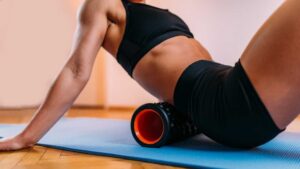
A foam roller is a cylindrical device that you roll over your body to massage and stretch muscles and fascia. It's like a personal masseuse for the muscles, which helps lengthen and loosen them. When your muscles are too tight or short, this can result in bad posture—and eventually pain! To start, lie on the floor with your back on top of a firm foam roller so that it rests just below your rib cage but above your stomach. Your arms should dangle at either side of you with open palms facing down toward the floor (this helps prevent unnecessary strain on joints). Inhale deeply through both nostrils as you lift one leg up off the ground while keeping both knees bent at 90 degrees. Slowly roll forward while exhaling through pursed lips until all pressure has been released from one side of your torso before switching sides to repeat. This can also be done lying face down with one knee bent while using the opposite arm as support during each lateral movement across the backside (known as hip extension), which will help improve muscle balance throughout the entire body while improving core strength by working opposing abdominal muscles simultaneously during exercise motion. If possible use two different sized rollers: one small enough so it fits comfortably under lower back area when lying face down; another larger than first size used when rolling onto upper backside where spine curves inward near neckline level (known as thoracic extension).
Do some yoga!
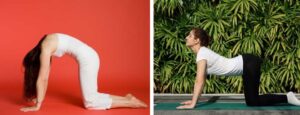
Yoga is a practice that involves deep breathing and stretching, as well as strengthening and focusing. The movement of the body helps you focus on your posture, and it's easy to do at home. If you're not familiar with yoga, try these simple exercises:
- Cat-Cow: This is an easy posture that helps open up your chest and stretch out your back muscles. From hands and knees position (table top), tuck your pelvis under like a cat arching its back (cow) then drop it down so it touches the floor like a child lying flat on her belly (cat). Do this five times in each direction with slow breaths out through the nose while keeping eyes closed throughout both positions. That's one round! Repeat two or three more times for full benefit of this stretch.
- Fish Pose: This simple exercise focuses on improving posture by strengthening core muscles in the abdomen along with toning shoulders, arms, thighs and calves, thanks to multiple angles involved in moving into this pose from all directions possible! Start on all fours with wrists directly under shoulders; press toes into floor behind hips while lifting tailbone off ground so hips are neutralised; lift chest towards ceiling by raising head slightly higher than heart centre point between shoulder blades which should remain parallel towards floor when doing so.
Get that posture right when you’re sitting
When you're sitting, keep your shoulders back and your head up. Don't slouch, cross your legs or lean over a laptop for long periods of time. Instead, take regular breaks from sitting down by getting up and walking around the room. If possible, try using a standing desk (or at least raising your monitor to eye level) so that you can get the benefits of both sitting and standing throughout the day.
Cobra pose
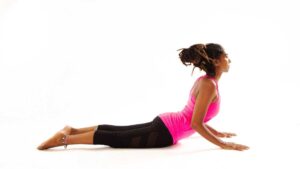
Lie on your stomach with your legs straight, palms flat on the floor, and fingers spread wide. Lift your head, chest and pelvis off the ground. Your arms should be straight but not locked at the elbow or bent too sharply at the wrist; you should be able to feel a stretch in your lower back as well as in your shoulders.
- Hold for 10-15 seconds; repeat 3 times. This pose can also be done with one leg lifted off the floor (one-legged cobra) or both legs lifted (two-legged cobra).
- If you're unable to do any part of this pose safely or comfortably—for example, if you have any type of injury—get help from a physical therapist instead!
Crossover
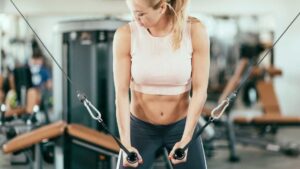
A crossover exercise is an exercise that involves alternating the position of your hands, feet, or both as you perform a specific movement. For example, when doing a bicep curl with dumbbells, you might start with your right arm extended and your left arm bent at the elbow. As you lift the weight, you'll extend your right arm while bending your left at the elbow to keep it in contact with your body. When you lower the weight again, you'll reverse this motion so that you're bringing the dumbbell down using only your left arm. This exercise is called a crossover because it involves crossing over from one side of your body to another as you perform it. Crossover exercises can be used in many different ways to help improve strength and muscle tone throughout different parts of your body.
Curl-up or the new crunch
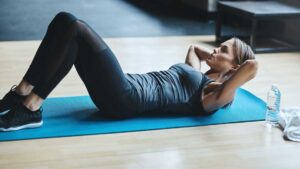
The curl-up or new crunch is a great exercise for the core. It is also a good exercise for people with back pain, pregnant people and those who have lower back pain. The curl-up is performed with your knees bent and feet on the floor, then you raise your upper body by contracting your abdominal muscles without lifting from the floor. You should look like an upside down V when you are done!
Core Stabiliser: Single Leg Extension
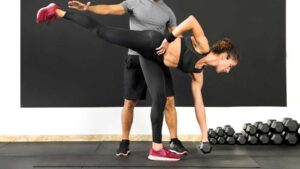
Stand up straight with your feet shoulder width apart and arms at your sides.
- Raise one foot off the floor, keeping it straight and parallel to the floor for balance.
- Hold this position for 10 seconds, then lower the leg back down to the ground. Repeat on the other side until you have completed 10 reps (5 on each side). You can later do this with weights too.
Forward fold

Forward fold is a yoga pose that helps to stretch the hamstrings and lower back. To do a forward fold, stand with your feet about hip-width apart and your arms at your sides. Bend your knees and reach toward the floor with both hands, keeping your back straight. Hold this position for several breaths before slowly releasing your hands to the floor.
Chest opener
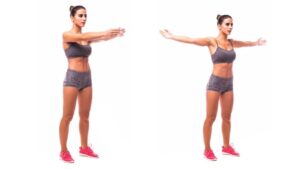
Stand with your feet hip-width apart, knees slightly bent.
- Lift your arms straight up, palms facing each other and push your shoulders back so that you feel a stretch in the chest and upper back area.
- Hold for 30 seconds to a minute before repeating 2 or 3 times more depending on how tight you are feeling (this exercise also works well if you're trying to improve posture after working at a computer all day).
- You can also try this exercise standing up by doing it while holding onto something sturdy (like the side of a desk) for balance; this will ensure that the core is engaged throughout so that we don't just rely on our arms when they are raised overhead..
High plank
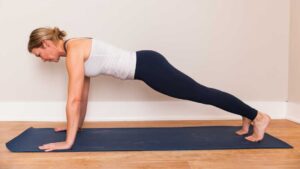
Lie on your stomach with your legs together, toes slightly pointed and arms at your sides.
- Place your hands on the floor shoulder-width apart, then raise your hips up off the floor until they're in line with your shoulders and knees (a high plank position).
- Hold this position for 30 seconds, keeping abs engaged to support yourself and maintaining a straight line from head to heels throughout the entire exercise—don't let any of those spine curves sneak back in!
Make sure you’re standing tall
- Stand with your feet shoulder-width apart, toes pointing forward.
- Push your hips back and keep your knees soft.
- Keep your chest up and shoulders back.
- Keep your head in line with your spine.
- Hold for 10 seconds before moving on to the next posture!
Get those abs working
- For example, the plank is a great way to strengthen your core and improve posture. Hold yourself in the plank position for at least 30 seconds at a time, repeating this exercise several times throughout the day.
- If you have trouble keeping your back straight while doing crunches or planks, try placing a folded towel under your lower back as a reminder to keep it straight and flat against the floor or bench. This will also help take pressure off of your lower back as you perform these exercises.
- Remember that proper breathing is important during any exercise routine—it allows oxygen flow throughout all parts of the body and prevents fatigue from setting in too early. You should also be sure to rest between sets to allow time for muscles to recover; otherwise they won't grow stronger!
You can correct your posture at any age, reducing aches and pains
Everyone knows that good posture is important for living a healthy life, but many people don't realise how much their posture affects them in their day-to-day lives. According to the Mayo Clinic, "good" or "healthy" posture involves keeping the head level with the shoulders and hips aligned; standing straight rather than slouching; lifting objects with your body instead of hunched over like an old lady (no offence, ladies). If you constantly slouch or hunch over when sitting down to use a computer or watch TV because you're tired after work, then it's time for some simple exercises that can help improve your overall health by correcting your poor habits. Exercises such as yoga and pilates have become popular ways for people to improve their posture because they teach better habits while strengthening muscles that support back bones while also stretching those muscles out. This is to ensure that they don't tighten up from being strained all day long when doing activities like sitting down at work without any breaks (or worse yet... sitting behind steering wheels). These exercises may seem boring at first glance but if done regularly over time could make dramatic improvements in how well we feel physically which translates into greater happiness overall.
Conclusion
Your posture affects everything you do throughout your day, even in your sleep. The perfect posture is needed not just to look good and feel great, but to live a healthier life. You will be able to work longer without fatigue and the extra energy you choose to utilise will flow into every part of your life. Having the ideal posture is essential for your health and well being, as poor posture can lead to muscle tension and fatigue, reduced lung capacity, rounded shoulders and more. These are just a few exercises you can do to improve your posture. There are many more that we didn’t cover here, but these should give you a good start. Just remember: if an exercise is uncomfortable or painful, stop doing it! If you have any questions about these exercises or would like some additional guidance, we encourage you to seek out the Posture Clinic for advice and assistance as our personal trainers specialise in posture analysis, correction and treatment.
